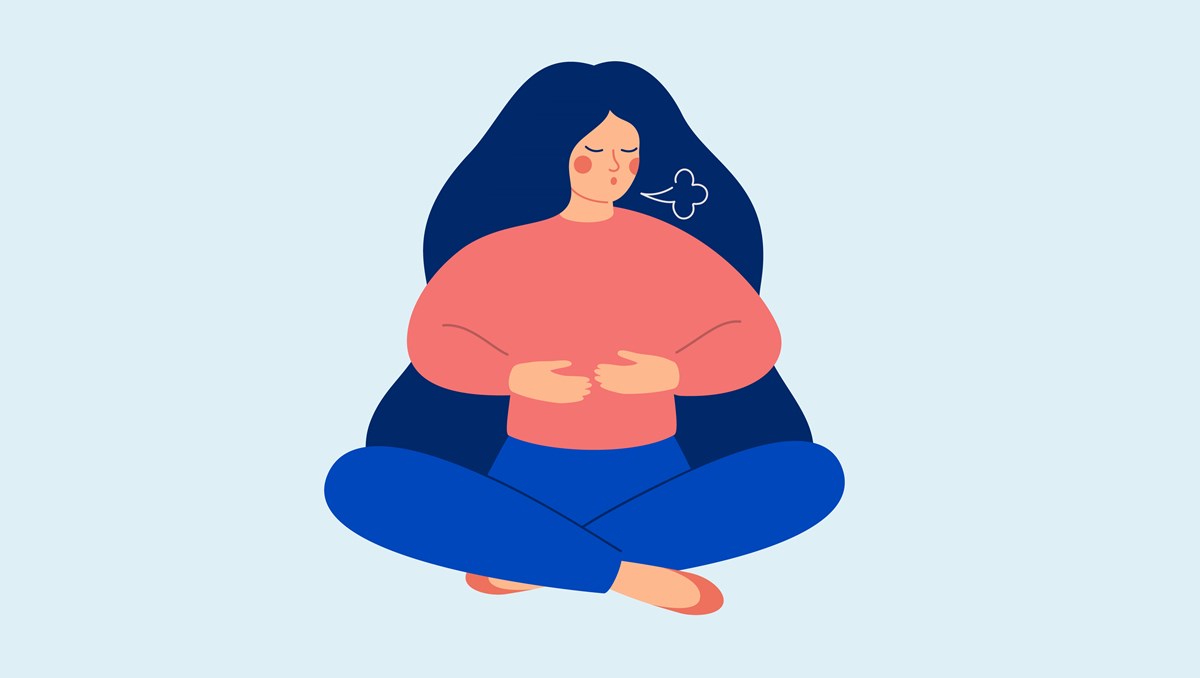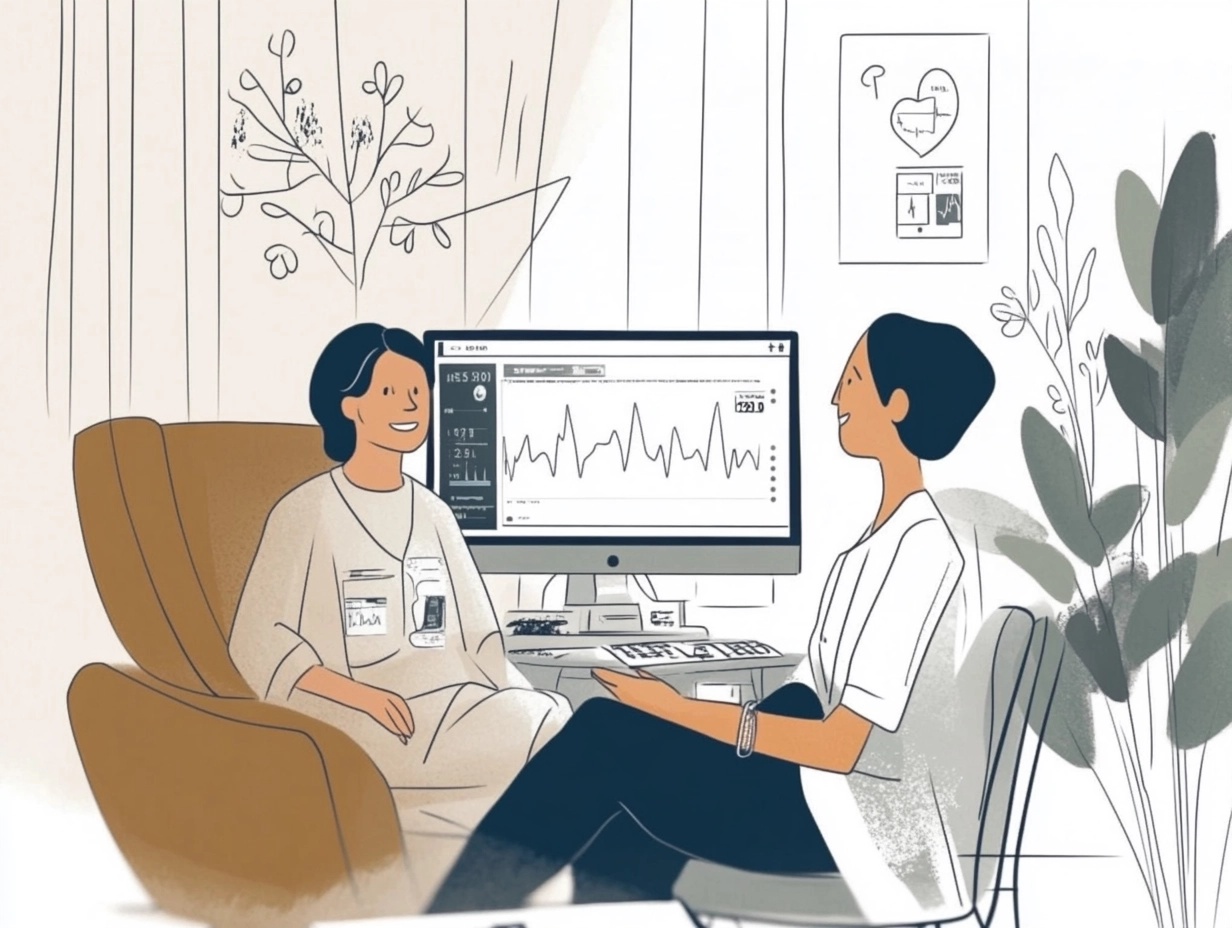Tell me about yourself.
I’ve always been interested in my health and was raised by a very health conscious mother. Sometime around the age of 18, I became the type of person that tends to be stressed and feel the pressure to succeed. Like failure is not an option. I’d describe myself as super driven.
Now I’m 58 and run a recruiting firm. It’s a high intensity, high pressure sales environment, so it can be very stressful. I find myself at a place in life where my body can’t take the constant pressure anymore. What seems to be happening now is I’ve got a lot of stress hormones coursing through my body. So I’m using the Lief to help calm down my nervous system.
How did you become interested in tracking your heart rate variability (HRV)?
I was having TMJ from clenching my jaws, so my dentist is the one who told me about HRV back in my 30s. HRV blew my mind the first time I heard about it. The fact that it’s a reliable indicator of how your body is handling stress, and that when your heart rate is more variable, that’s when your body is in a more relaxed state.
Everything in life seems like it should go like a metronome, so it was the opposite of what I’d assumed. Also the fact that scientific data backs up HRV biofeedback really resonated with me. I thought, “What a cool way to see how your body is reacting to outside stressors, as well as internal stressors!” Like you can even see how being dehydrated puts your body under stress.
How did you discover the Lief Smart Patch?
My naturopathic doctor Antonella recommended Lief to me. She educated me about it since I didn’t know much about HRV. Even though I’d tried biofeedback in my 30’s and it was really effective, I hadn’t had much experience with it since then. My doctor suggested I try Lief so I could get the real time biofeedback.
How has tracking your HRV with Lief helped you?
It’s kinda hard for me to tell when I’m changing because I forget what it was like before, but it hit me the other day that I hadn’t been holding my breath anymore, which I used to do all the time. I’m starting to automatically breathe in a way that helps me recenter and calm down, even when I don’t have my Lief on.
I’m doing my own “autodose” even when I’m not wearing the device to guide my breathing. Sometimes I even feel a “ghost vibration.” I think what’s happening is not my mind evaluating, but rather my body going, “Okay, let’s breathe.” It’s as if my body is training itself outside of my brain to breathe more, before my mind has a chance to start fixating on stress.
My Lief is also really beneficial as a reminder to meditate throughout the day. When my Lief buzzes, it’s the perfect time for me to get in a short meditation. My Lief encourages me to pause, so then I sit down and breathe. I appreciate that gentle reminder throughout the day.
What do you value most about tracking your HRV continuously throughout the day?
I value the Lief program because it doesn’t force me to do anything I can’t do in a given moment, but it serves as a solid reminder to check in with myself throughout the day.
On a side note, I noticed I’m becoming a better listener. There’s a tension that happens when you’re in a conversation, but you’re just listening to respond rather than actually listening to the other person. When I’m doing that, there’s a stress response in my body and my Lief starts buzzing while I’m talking to people. It reminds me to check in with my body, do my breathing, and all of a sudden I’m really listening.
What do you do with your HRV information?
My job is all about numbers, but even with that I don’t approach it like a data driven scientist. Mostly I like it when my Lief goes, “Good job!” and tells me how much I’ve improved my HRV, like by +2 or +4. Occasionally I’ll go to the Lief app and look at what’s happening to my HRV a couple times a day. But mostly I rely on the buzzing throughout the day. Haha I’m good at collecting data, but not analyzing data!
I think what’s happening is more mind-body awareness. What I’m learning is, “Oh, I didn’t realize I was having a stress response to this action.” And then it makes me ask myself, “What’s happening right now?” It makes me check in with myself. Did a thought come into my mind that stressed me out? Is this phone call making me tense? And then I actively do a Downtime practice, which is an effective real time intervention.
What do you value most about the Downtime practice?
The Downtime helps stop the madness. Obviously I haven’t been listening to my body, so it’s my body calling out to me asking me to slow down. I view the automatic Downtime (a.k.a. autodoses) as a voice for my body. It’s a voice for my nervous system to tell me to take a restorative moment for myself.
How did Lief help you with your mental health?
Lief is preventative. I’m reversing some of the problems from my high stress levels, and I feel like I’m preventing anxiety. My mom got anxiety around my age, and two of my sisters have anxiety. All three of them have attacks where they think they’re dying and have to go to the hospital. They’ve all figured out how not to have panic attacks, but it runs in my family.
Even though I don’t have anxiety right now, I can see how I would be pushed into an anxiety attack if I didn’t keep it at bay. I’m glad I have the tools now to help myself. Mental health issues are more open now, which is great. I’m super excited about this type of technology for people who have anxiety, especially for people who have panic attacks.
Hand in hand with the Lief, I’ve been meditating every day for 20 min. It started after I joined the Lief program, so my Lief is encouraging me to do more to support my health. To me, mental health is training my mind so I don’t get lost in all the drama of my thoughts. So the fact that my Lief is reminding me to meditate throughout the day and helping me implement a meditation practice has been instrumental.
Body scans are a super valuable part of meditation. I’ll do 10 minutes of body scan meditation and then 10 minutes of focusing on my breath and what that does is it gets me into my body and cuts off my thoughts. I think that my body scan and meditation training leading up to the Lief really helped me.
I don’t know if I would have done this five years ago. I don’t know if I’d have the body connection to the Lief, but I’ve been training myself. I tell people, “Check in with your body. Your thoughts can’t go crazy if you’re feeling into your body.” My Lief is the most amazing tool ever!
You know how everything works together? I don’t know if it’s only because of Lief, but every day I get out my rowing machine or do Yoga with Adriene on YouTube. I love her because she exudes love and peace and serenity. Through this process of wearing my Lief, I’ve added in other consistent healthy practices. In short, I think the Lief is helping me be better to myself.
Can you share a brief example of how you like to use your Lief in any given day?
I like to exercise in the morning, so I wait until I’m done exercising and showering to put on my Lief around 9am. Then I wear it all the way until I go to bed, about 5 out of 7 days a week. I think you shouldn’t wear it during exercise because of the excessive sweat. Similarly, if I swim I don’t wear it. But I keep it on when I go on leisurely walks and take my dogs out.
At first I was like, “Huh, this is kind of a pain,” but that feeling only lasted a couple days. Now my Lief is part of my routine. I just slap it on and it’s there to support me throughout the day.
I’m trying to approach my Lief practice as a body practice rather than a thinking practice. I feel like it’s training my body instead of my brain. That’s what’s great about having buzzing on my body instead of in my head. Instead of me thinking, “OMG I need to learn this”, my body is learning through consistent practice. It’s becoming more reflexive and intuitive.
What advice would you give to others who are just getting started with their Lief?
I would say: Do body scan meditations with the help of the internet. If you think about your hand, it’s one thing. But when you feel into your hand, that helps you pull yourself away from the never-ending thoughts. It takes practice, but that combined with Lief is a powerful tool for recentering and being present in the moment instead of lost in your head.
You’re getting more connected with your body. Make sure that when your Lief starts buzzing, if you’re able, even if you’re just standing there, to feel into your body. Feel into your feet, feel your feet connected to the floor. Get out of your head and into your body every time your Lief buzzes.
I try to get my Lief to stop buzzing when I’m running around, but it doesn’t work. So then I’ll stop and stand still and focus on the Downtime, and I’ll be able to successfully turn off the buzzing.
Definitely take your time doing your Downtime sessions. Seriously, it’s like your body takes over. That’s why I think I’m going to be a good case study because I’m on day 52 and already feeling the positive effects. After a couple more months, my body is going to be really trained in terms of noticing when I’m getting stressed.
I always think if you do one thing to improve, it ripples out. So I’m also improving my diet. It didn’t all start with the Lief, but that’s definitely a part of it. Drinking less alcohol, eating healthier, exercising more, putting effort into Lief — it’s all working together. If you just stick your Lief on and expect it to fix you immediately, it’s not going to be a magical solution. You have to put in the effort. It can’t just be like, “It doesn’t work, I stuck it on my body!” Make sure you take it seriously and put in the time and energy.
People want instant gratification, like “here’s a pill!”, but you know what, pills are not the wave of the future. The future is this kind of personalized approach that addresses the underlying physiology. That’s why I’m so excited about Lief. I think younger generations will actively try things like eating healthier, practicing meditation, engaging in HRV biofeedback etc., whereas the older generation is more prone to immediately turning to medication to address health issues.
Anything else you’d like to share?
I want people to know that I was headed for a cliff, not suicidal, but drinking too much and overweight. This is part of me turning my health around. I’m not a perfect person, but I’ve come to this because I got myself into trouble from abusing my body. It’s never too late to do these things.
I’m already seeing incredible changes from the stuff I’m doing. I am obese right now, but I’m turning that around. So I don’t want people to think I’m some skinny, perfect person. It took pain and suffering to get me to this point where I would do something for myself, and I’d love to see other people be proactive before it happens. Pain and suffering can be good motivators.
So I would tell people: Just try it. You’re worth it. You’re worth doing things that take time and energy.





Leave a Reply
You must be logged in to post a comment.